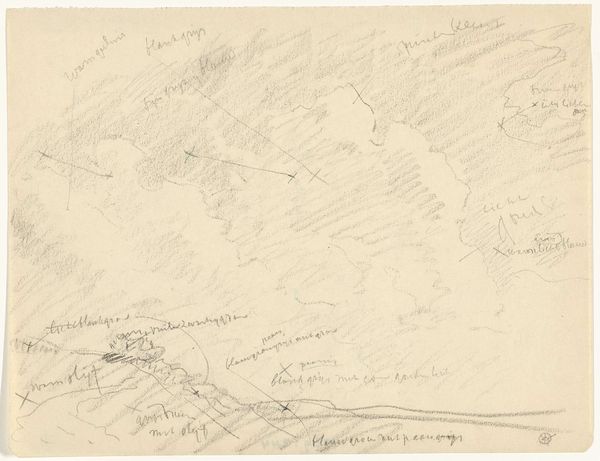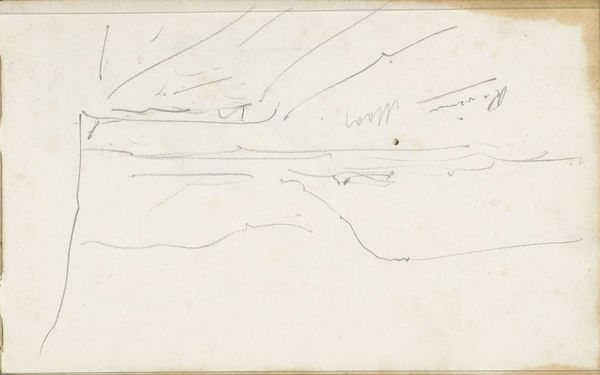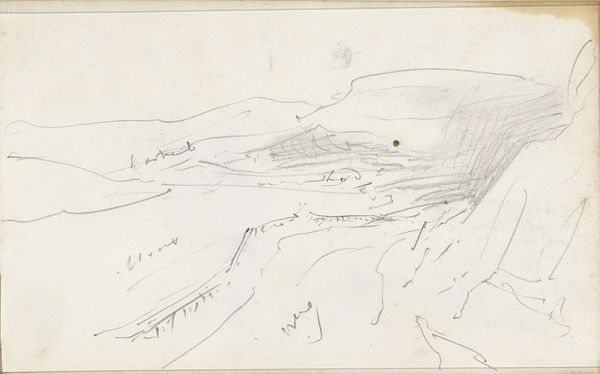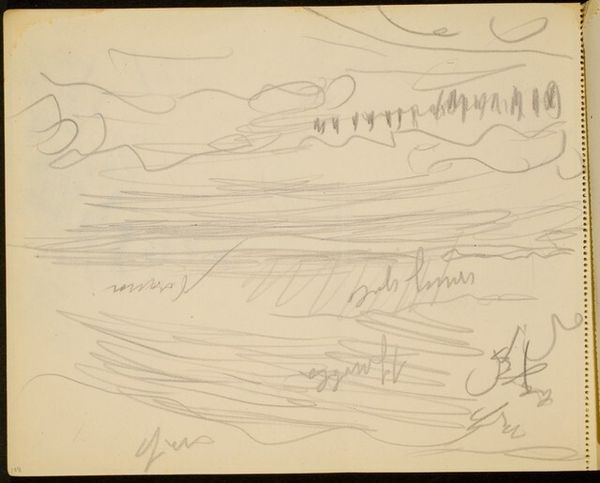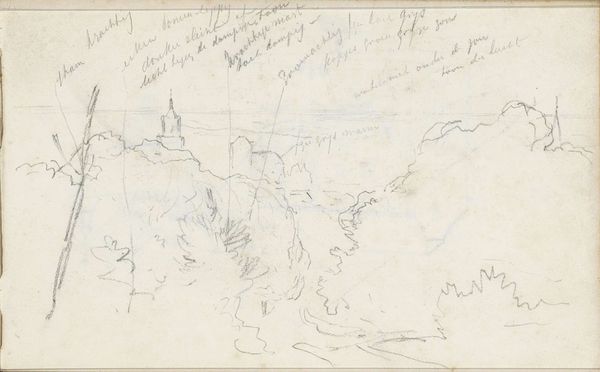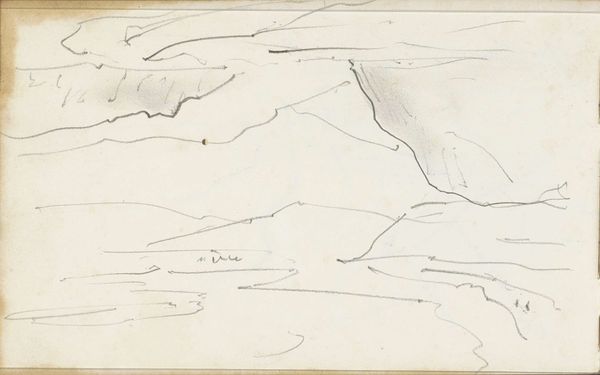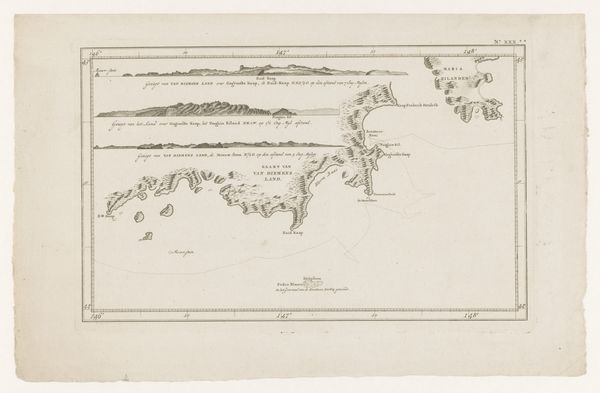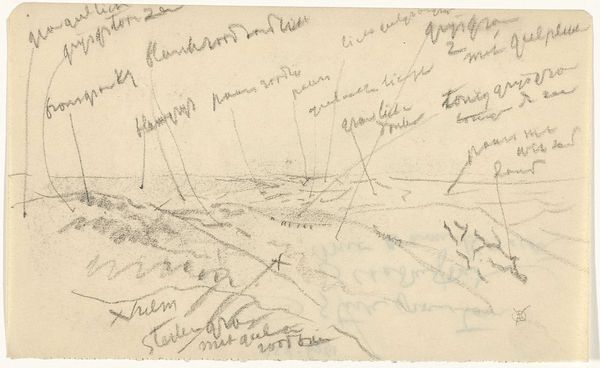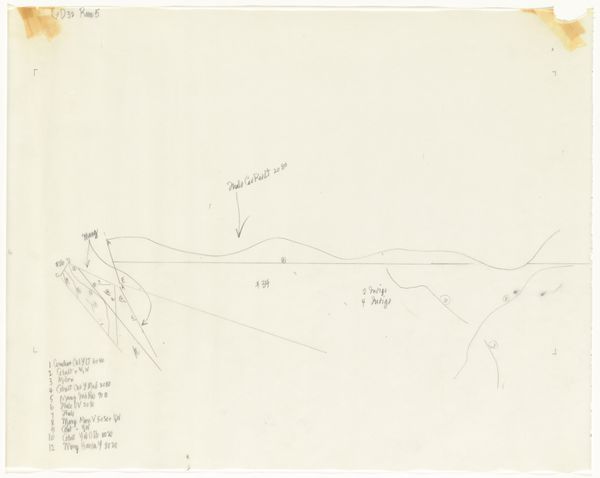
drawing, pencil
#
drawing
#
landscape
#
etching
#
pencil
#
realism
Dimensions: height 219 mm, width 283 mm
Copyright: Rijks Museum: Open Domain
Curator: Gerrit Willem Dijsselhof's work, thought to have been executed between 1876 and 1924, provides us with a delicate view of agricultural lands under the horizon. The media here combine the immediacy of pencil with the intricacy of etching, a fascinating contrast to consider as we examine the image. Editor: My first impression is of stillness—a vast, quiet landscape waiting to be filled with color and life, like a musical score before the orchestra begins to play. Curator: Interesting. Looking closer, we note Dijsselhof's deft application of line to create spatial depth. See how the density of the pencil work increases towards the horizon line? A deliberate formal choice, perhaps, to emphasize the flatness of the land. Editor: Or perhaps it’s like remembering a dream fading into clarity as it moves toward us. I notice his little handwritten notes scattered across the fields... little poetic breadcrumbs. It gives a strong sense of intimacy, almost as if we're seeing directly into the artist's notebook. Curator: Yes, the notes are intriguing! One might consider them paratextual elements that function semiotically, drawing us further into the context of the drawing. They both anchor and destabilize the scene’s meaning. Editor: They do, don't they? I feel a personal resonance with it, that scribbled, on-the-spot capturing of a landscape... like he's trying to hold onto the feeling of the moment before it dissolves. Do you ever feel that landscapes look deeper when rendered in grayscale? Curator: Undoubtedly, a limited palette often emphasizes form. Restricting chromatic data permits greater focus on tonal range. In Dijsselhof's etching we find not only careful perspective, but also sophisticated control of line. Editor: It invites a conversation, really. An ongoing dialogue with nature that's captured just so beautifully and informally. This image feels intensely real precisely *because* it isn't trying to be photorealistic. Curator: Agreed, its unfinished character almost becomes its point. The subtle contrast between the starkness of the open fields and the hazy, undefined sky makes a distinct impression. I appreciate you pointing out the "poetic breadcrumbs," those handwritten notes, which elevate the work from landscape study to something far more personal. Editor: And I think I now have a far deeper understanding of how a "realistic" landscape, rendered formally, and with great artistic intention, may yield very subjective emotional responses in the viewer. Thank you.
Comments
No comments
Be the first to comment and join the conversation on the ultimate creative platform.
